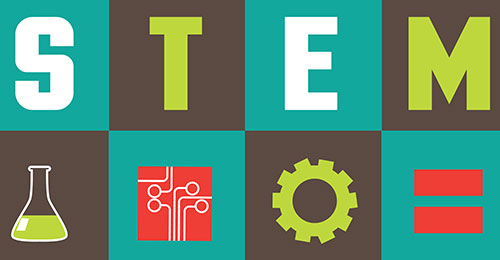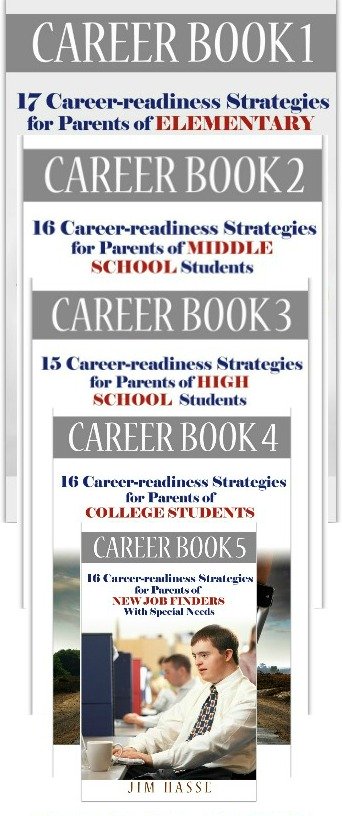Career Clusters: Cerebral Palsy Career Builder for High School Students
By Jim Hasse, ABC, GCDF, Disability Employment Expert
_________________________________________________________
The National Career Clusters™ Framework, representing more than 79 career pathways, can help your high school student with cerebral palsy (CP) navigate his or her way to success in college and in career building.
Those guidelines were first introduced by The National Association of State Directors of Career Technical Education Consortium, which was established in 1920 to represent the state and territory heads of secondary, post-secondary and adult career technical education across the U.S.
As an organizing tool for curriculum design and instruction, career clusters provide the essential knowledge and skills for 16 career pathways.
Career Clusters are also a useful guide in developing programs of study in high school and beyond so your high school student can plan fields of study for a complete range of career options.
For example, here’s the career cluster definition for Science, Technology, Engineering and Mathematics (STEM) careers:
“Planning, managing, and providing scientific research and professional and technical services (e.g., physical science, social science, engineering) including laboratory and testing services, and research and development services.”
That career cluster definition may not mean much to you, me or the high school student you’re mentoring, so I’m going to cite a concrete example (a profile) of a STEM job.
Let me introduce you to Jack, a real person I know who works as a process control engineer in the paper industry. I’m masking his true identity so I can give you more inside information about Jack, his job and his company that would otherwise be difficult to disclose.
Job Types
In practice, process control engineering takes one or more of the following forms:
- Discrete – Robotic
assembly, such as in the automotive industry, is an example of discrete process
control. Most discrete manufacturing involves pieces of product, such as metal
stamping.
- Batch – One example is
the production of adhesives and glues, which normally require mixing raw
materials in a heated vessel for a period of time to form an end product, such
as a food, beverage and medicine.
- Continuous – The control of the water temperature in a heating jacket is an example of continuous process control. Some important continuous processes are the production of fuels, chemicals, paper and plastics, usually in large quantities.
As
control engineer of a continuous process, Jack monitors all processes in a
large pulp paper mill, which, since 1996, has continually developed its
capability, in incremental steps, to control its paper making process through
computer technology.
Job Demand
Jack is one of two process control engineers employed
by the mill, which converts pulp wood into a range of high-grade papers. The
pulp mill’s manager said the company would like to hire another process control
engineer, but it has not been able to find such a qualified individual. Most
large paper mills throughout the world employ two to four process control
engineers.
Many U.S. colleges place process
control engineer specialists immediately upon graduation due to a high
demand in the manufacturing industry, according to www.degrees.info.
Skills Needed
Since there are so many departments involved in
process controls, clear and concise communications are imperative for a process
control engineer to be successful. Jack has had to develop his team leadership
skills and be able to independently make decisions.
Project management is a large part of his job. Upon completion of each of his projects, detailed documentation from inception through completion is required.
Jack is often required to perform a myriad of tasks in a typical workday.
As project goals and guidelines are altered by
supervisors on the production floor and by technical roadblocks, he must be
able to accurately assess the situation. He then must present alternate
solutions based on his knowledge and experience as well as that of his
colleagues.
Education Needed
As one of the 16 career clusters, STEM careers, such
as process control engineering, apply science, technology, electronics and math
(STEM) in a systemic approach to a workplace challenge.
In Jack’s case, he attended a well-regarded four-year campus of a major state university and earned a double major in computer science and electronics and a double minor in physics and math. He had three computer programming internships at a single, local company during his four years of college.
Upon graduation from college, Jack expected to get a
job consisting mostly of programming because career clusters and STEM careers
had not yet moved to the forefront of America’s educational system. But, by
happenstance, he discovered the process control field used all of his STEM
disciplines of science, technology, electronics and math.
Job Tasks
Jack uses computer technology to monitor the entire
process throughout the mill as well as all the associated utilities. He’s also
charged with the responsibility to fine-tune the controls for the entire
paper-making process or at specific sections of the system.
That means he needs to have knowledge of electrical systems and instrumentation. He must know how to write code as well as understand valve, flow meter and boiler technology (specialty knowledge he has picked up through continuing education since he started working as a process control engineer in 2006).
Jack’s “office” has a high-tech ambiance. He works
with three large monitors and a variety of processors which allow him to
control or watch all the vital control systems throughout the mill.
With an access of up to six different electronic “highways” within the mill, he can call an on-the-floor operator to tell him or her that a valve with a specific unit, for instance, is not operating properly.
He always has the option to walk the floor himself,
which he often does, to speak with operators in person, but that is not
necessary.
Compensation
According to www.glassdor.com, the average salary for a process engineer in the paper
industry is $98,000.
Skill Transferability
Jack is interested in physical therapy and fitness.
He has recently realized that he could apply these same skills and knowledge to
physical therapy or in various sectors of the health care field in addition to
any process that transfers a raw commodity (such as iron ore into steel, milk
into cheese, cotton into cloth, silicone into plastic, grapes into wine) into a
finished value-added product.
Pay Back
Jack’s mill manager considers the job of process
control engineer as a “line” function (as opposed to “support” work), one that
is directly related -- and can be easily traced -- to the company’s bottom line
results.
For example, Jack says his most rewarding work is helping a supervisor to examine the process variations within a particular work unit’s output and to fine tune the computer code involved for optimum operating results.
In one particular instance, he recently helped the
mill save $500,000 a year in operating costs by working with a supervisor to
achieve a more optimum flow rate.
Accessibility
Jack’s mill manager says the duties of a process
control engineer could very clearly be carried out by a qualified person with a
physical disability, since the work is done at a keyboard and going onto the
processing floor during trouble-shooting episodes is “optional” in most cases.
High school is the time to help your son or daughter with CP to explore all 16 career clusters and the more than 79 career pathways that are attached to them. Notice the required knowledge and skills and the potential pathways for each.
Return to Part-time Jobs
Go
to Cerebral Palsy Career Builders
This is Creative Commons content. You can freely and legally use, share and repurpose it for non-commercial purposes only, provided you attach this sentence and the following attribution to it (including the two links):
Originally written and illustrated by Jim Hasse, ABC, GCDF, owner of Hasse Communication Counseling, LLC, who, as a person with cerebral palsy, served for 10 years as a vice president in a Fortune 500 company during his 29-year career in corporate communication. He’s an Accredited Business Communicator, certified as a Global Career Development Facilitator and author of 14 Amazon books about disability awareness and disability employment issues.





